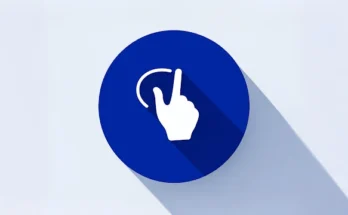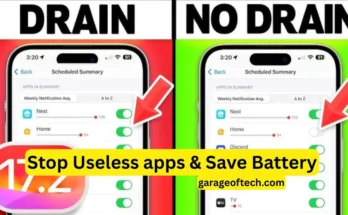A tattoo often begins as a feeling, not a design. It can come from a memory, a moment, or even a passing thought that carries weight in someone’s life. With technology reshaping creativity, the Tattoo Design app allows people to transform raw emotions into skin-ready art. It is no longer about flipping through outdated design catalogs at a tattoo shop; instead, users can visualize personalized tattoos directly on their bodies before ever stepping into a studio.
The Digital Transformation of Tattoos
Body art has always been more than decoration—it has cultural, spiritual, and personal significance. Yet, the way tattoos are designed and chosen is being redefined by technology. Tattoo apps now act as digital sketchbooks, where users experiment instantly without the limitations of paper. They bring together tradition and modernity, enabling someone to mix ancient symbols with minimalist aesthetics or blend cultural motifs with abstract art. This shift not only empowers tattoo lovers to create more meaningful body art but also opens opportunities for professional artists to showcase their work to a global audience.
How Tattoo Design Apps Work
The technology behind these apps feels simple at first glance, but it’s surprisingly powerful. Users can browse existing designs, upload inspiration, or type an idea into the app. With AI-driven visualization, the design is placed directly onto the skin in real time. Augmented reality ensures perfect alignment, showing exactly how the tattoo would look on an arm, back, or ankle. This level of precision takes away the uncertainty that often comes with permanent art, allowing people to feel more confident and excited about their choices.
Personalized Art Without Limits
What makes tattoo apps truly special is their focus on personalization. Instead of picking from generic flash sheets, users can create unique tattoos that tell their personal story. For some, it may be initials woven into a design; for others, it might be an abstract shape representing resilience, or a cultural symbol tied to heritage. These apps provide tools for endless customization—colors, shapes, sizes, and styles—turning tattoos into living narratives. This personal touch transforms the art from a simple design into something deeply meaningful and lasting.
Bridging Artists and Clients
Tattoo Design apps also play a crucial role in connecting tattooists with clients. Professional artists can upload their portfolios, while users browse and test designs digitally before booking. This creates a bridge where both sides benefit: artists gain visibility, and clients gain confidence in choosing the right artist. Miscommunication is reduced, trust is increased, and the tattooing process becomes smoother. What was once guesswork now becomes a collaborative journey guided by clarity and creativity.
Experimentation Without Regret
One of the biggest fears about tattoos is regret—choosing a design that feels right in the moment but not in the long run. Tattoo apps help eliminate this fear. By allowing users to virtually “try on” tattoos in different sizes and placements, they create a safe testing ground. People can explore bold designs without the pressure of permanence. For first-timers, this feature is especially valuable, giving them reassurance before committing to ink.
Expanding Tattoo Education
Tattoo apps are not just for enthusiasts; they’re also valuable for learning. Aspiring tattoo artists can practice sketching digitally, following tutorials and experimenting with different styles before working on real skin. Interactive features like style guides, shading tips, and digital canvases give beginners the chance to build confidence. This democratizes tattoo education, making it more accessible for people who might not have resources to attend specialized schools or workshops.
Augmented Reality for Realistic Previews
Augmented reality has completely changed how tattoos are previewed. By pointing their phone camera at their body, users can instantly see how a design would appear in real life. The app accounts for skin texture, curves, and natural shadows, creating a realistic preview that feels like the tattoo already exists. This immersive experience removes uncertainty and builds trust, letting people make decisions with confidence instead of doubt.
From Digital Sketch to Inked Reality
The journey doesn’t stop with digital previews. Many tattoo apps include booking systems, helping users connect with local or international artists who specialize in their chosen style. The digital sketch essentially becomes the blueprint for the real tattoo. This ensures accuracy in execution and a smoother experience in the studio. What starts as a simple idea on an app transforms into permanent, meaningful art with minimal risk.
Intellectual Property and Originality
One challenge in the tattoo world has always been originality. Tattoo Design apps now offer copyright protection features for artists, ensuring that their unique designs cannot be duplicated or stolen. Clients also benefit from knowing their tattoo is truly one-of-a-kind. By safeguarding intellectual property, these apps encourage artists to keep innovating while giving users access to exclusive, authentic artwork.
Emotional Connections Through Tattoos
Unlike other art forms, tattoos stay with a person for life. They often represent milestones, healing, or personal growth. Tattoo apps enhance this emotional connection by letting people design tattoos that reflect their unique journeys. For example, a scar can be covered with an inspiring symbol, or a tattoo can honor a loved one. By turning raw feelings into precise designs, apps help capture emotions in ways that traditional catalogs never could.
Sample Prompt:
A rugged, stylish man with Face with the face from the uploaded image, keeping the facial features
exactly the same. and voluminous wavy hair styled back, wearing round dark sunglasses and a mild
color open-collar shirt. He has a prominent black scorpion tattoo on the left side of his neck and
wears layered black chains around his neck. The lighting is soft and warm, highlighting his side
profile with a serious expression. The background is an indoor setting with blurred wooden wardrobe
doors, creating a casual, intimate atmosphere.
Future of Tattoo Design with AI and VR
The future of tattoo design is only getting more exciting. Artificial intelligence will continue to evolve, suggesting designs based on personality, cultural identity, or even mood. Virtual reality could soon allow full-body tattoo simulations, letting people “try on” tattoos in 360 degrees before making a choice. The fusion of AI, VR, and tattoo artistry promises endless possibilities, bridging creativity and technology in ways we are only beginning to imagine.



